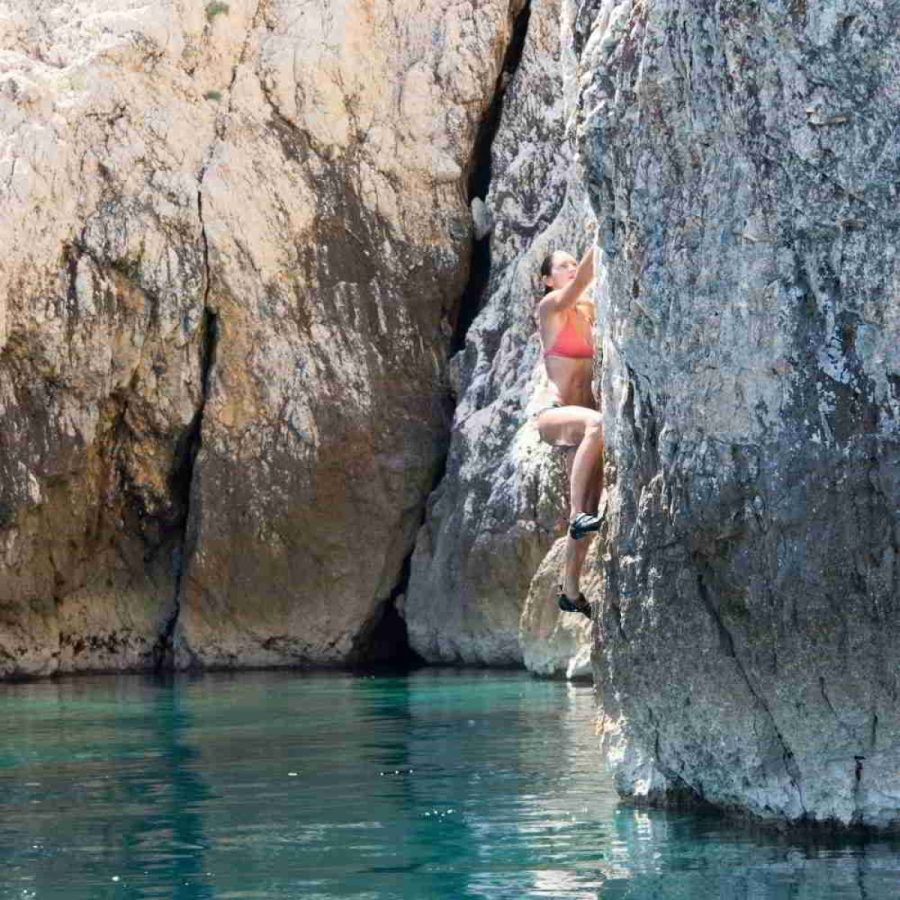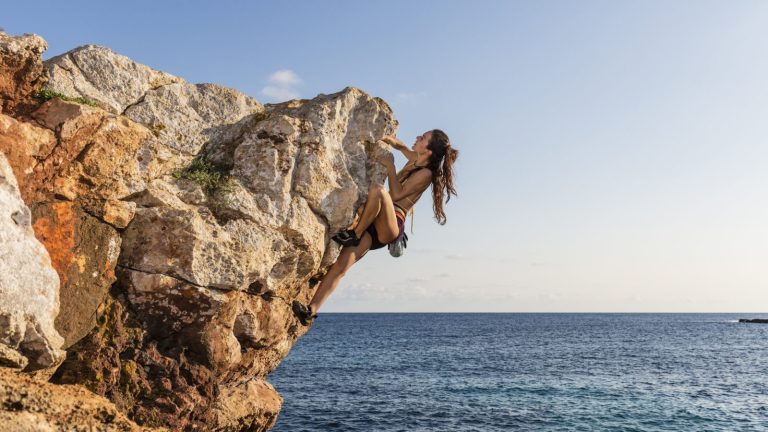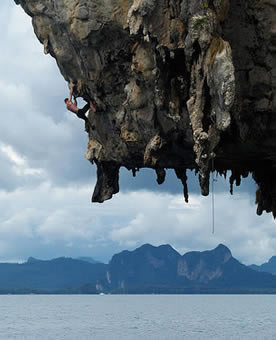The History and Evolution of Deep-water Soloing
Deep-water soloing, also known as DWS or psicobloc, is a form of rock climbing that involves climbing without ropes or harnesses on a natural rock surface above water. In this article, we will explore the history and evolution of deep-water soloing, including its origins, development, and the challenges faced by climbers.
Deep-water soloing is a unique form of rock climbing that has been gaining popularity in recent years. Unlike traditional rock climbing, which involves ropes and harnesses to protect climbers from falls, deep-water soloing relies on the water below to cushion falls. This extreme sport requires a combination of physical strength, mental focus, and an adventurous spirit.
Origins of Deep-water Soloing
The origins of deep-water soloing can be traced back to the early 1970s in the United Kingdom. A group of climbers discovered the limestone sea cliffs of the Dorset coast and began climbing them without ropes or harnesses. They called this new form of climbing “deep-water soloing,” and the term has stuck ever since.
Early Development
During the 1980s and 1990s, deep-water soloing remained a relatively niche activity practiced by a small group of climbers. However, it began to gain more attention as climbers sought out new challenges and ways to push the limits of the sport.
One notable development during this time was the use of chalk to dry the holds on the rock surface, allowing climbers to maintain a better grip. Additionally, climbers began to experiment with different techniques, such as using jumps and dynamic movements to gain height and momentum.
Growth in Popularity
In the early 2000s, deep-water soloing began to gain mainstream attention as more climbers shared their experiences and videos of the sport online. This helped to attract new participants and raise awareness of the unique challenges and rewards of deep-water soloing.
The sport has since grown in popularity around the world, with new climbing locations being discovered and established. The Red Bull Cliff Diving World Series, which features both diving and deep-water soloing, has also helped to bring attention to the sport and its top athletes.
Dangers and Safety Measures
As with any extreme sport, deep-water soloing comes with inherent risks. Falling from a significant height can result in serious injury or even death. However, climbers can take several measures to minimize these risks, such as wearing appropriate equipment, practicing proper technique, and scouting the climbing area beforehand.
Additionally, many deep-water soloing locations have become more regulated in recent years, with safety measures and access restrictions put in place to protect both climbers and the environment.
Techniques and Equipment
Deep-water soloing requires a unique set of techniques and equipment compared to traditional rock climbing. Climbers typically wear lightweight clothing and climbing shoes designed for maximum grip on wet rock surfaces.
Some common techniques used in deep-water soloing include mantling, dynos, and drop knees. Climbers must also be skilled at reading the rock surface to identify the best holds and routes to climb.
Famous Deep-water Soloing Locations
There are several well-known deep-water soloing locations around the world, each offering its own unique challenges and rewards for climbers. Some of the most famous locations include:
- Mallorca
- Krabi, Thailand
- Psicobloc Masters in Park City, Utah
- Pont D’Arc in France
- Calanques in Marseille, France
- The Gower Peninsula in Wales
- The Dorset coast in the UK
- Mallorca, Spain
Each of these locations offers a variety of routes and difficulty levels, from beginner-friendly climbs to advanced routes that challenge even the most experienced climbers.
Notable Climbers
Over the years, several climbers have made a name for themselves in the world of deep-water soloing. Some of the most notable include:
- Chris Sharma: Considered one of the top climbers in the world, Sharma is known for his daring deep-water soloing expeditions around the globe.
- Dean Potter: A legendary climber and adventurer, Potter was known for his boundary-pushing exploits in deep-water soloing and other extreme sports.
- Daila Ojeda: One of the top female climbers in the world, Ojeda has established herself as a force to be reckoned with in the world of deep-water soloing.
The Future of Deep-water Soloing
As deep-water soloing continues to gain popularity, it’s likely that we’ll see new locations and routes discovered, as well as new techniques and equipment developed to help climbers push the limits of the sport. However, it’s also important for climbers and organizers to prioritize safety and environmental stewardship to ensure the sport’s long-term viability.
Conclusion
Deep-water soloing is a unique and challenging form of rock climbing that has been evolving and growing in popularity for several decades. From its humble beginnings on the Dorset coast to the international competitions and expeditions of today, the sport continues to inspire and challenge climbers around the world.
FAQs
- Is deep-water soloing safe?
- Deep-water soloing comes with inherent risks, but by taking appropriate safety measures, climbers can minimize these risks.
- Do you need special equipment for deep-water soloing?
- Climbers typically use lightweight clothing and specialized climbing shoes for maximum grip on wet rock surfaces.
- How do you stay safe while deep-water soloing?
- Climbers can stay safe by wearing appropriate equipment, practicing proper technique, and scouting the climbing area beforehand.
- Can anyone try deep-water soloing?
- While deep-water soloing requires a certain level of physical fitness and mental fortitude, there are routes and locations suitable for climbers of all skill levels.
- What is the future of deep-water soloing?
- As the sport continues to gain popularity, it’s likely that we’ll see new locations, routes, and techniques developed, as well as increased attention to safety and environmental stewardship.


